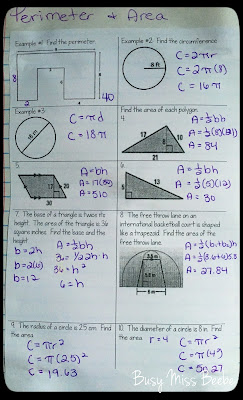See last year's INB pages from this unit here.
Last unit. Here is the table of contents:
This year I had to review completing the square for circle equations. You know how when you review something from the previous year, and your students all try to convince that they never learned it? This time they may have been right. I tried to review completing the square. I failed because from what I could tell, they didn't learn it enough to review. (From what I was told, these students didn't quite make it through the factoring unit.) I made a booklet for the notes. The front I tried to write out the steps and show an example step-by-step next to them. Then there are four examples of just completing the square. I accidentally included an example that lead to an answer with imaginary numbers. We would have just skipped over that example in class, but we ended up skipping over all of these examples to be honest. My class begged to just jump into the process they had to know for circle equations. *sigh*
My tangent theorem page was different from last year. I removed common tangents. I'm considering adding it back in because what I'm realizing with Common Core is that nothing has really been removed, it's just been hidden in a vaguely worded standard.
I made my last booklet. I combined central and inscribed angles into to one day with inscribed polygons. Next year these will be two separate days. I plan on making activities to help students better understand these topics, and separating them would help with allowing everything to sink in.
Lastly, we covered arc lengths and area of sectors. Next year I need to add radians to this lesson. I didn't realize that it was part of the standards this year, and it appeared on the Regents. Also, I really want more examples for these topics.
I'm so excited to start overhauling my notes for next year. I really enjoy going through each unit and finding things that I could do better. I hope my musings have helped you as well.
















































